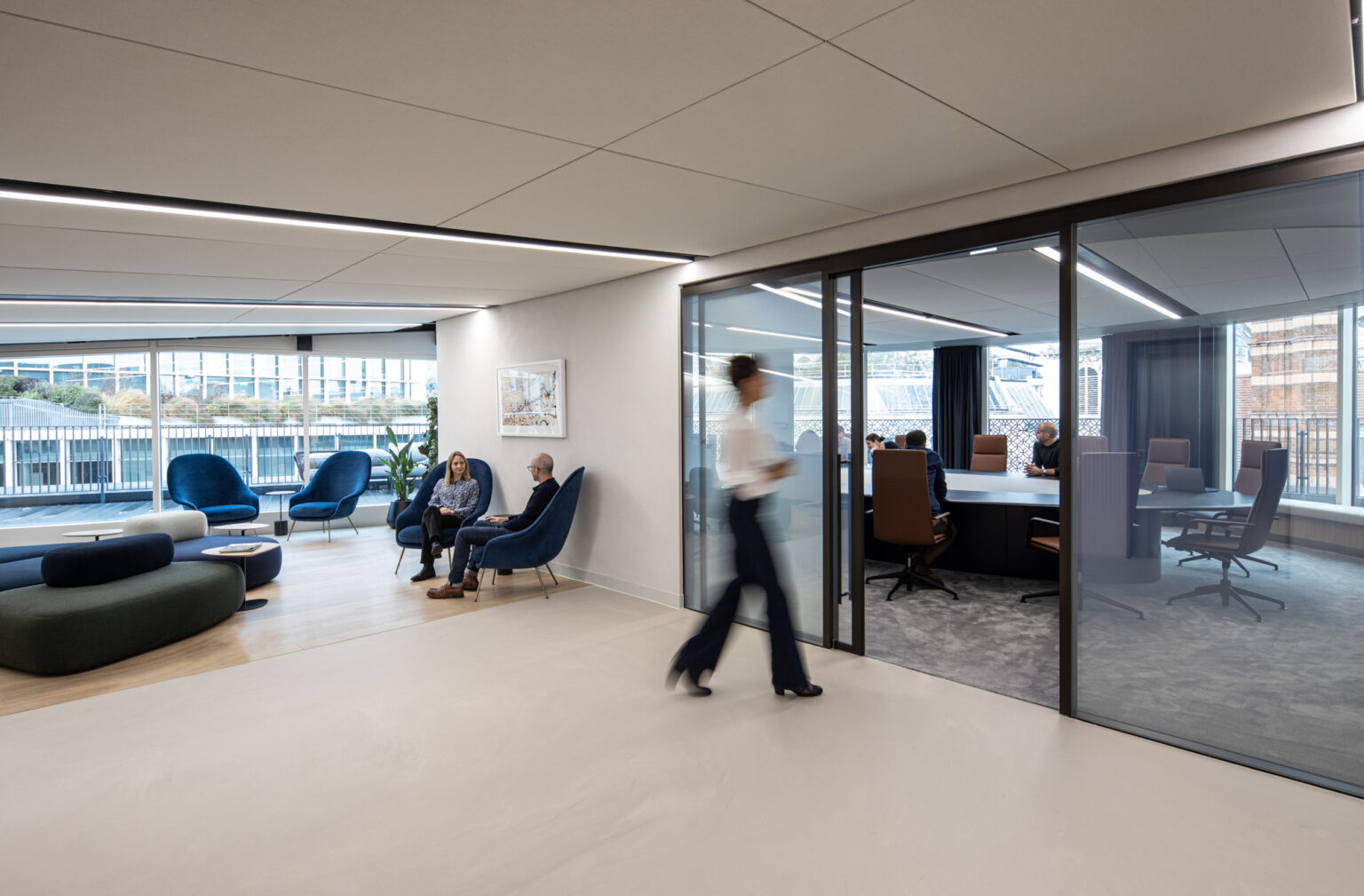Considerations for creating aesthetic fire-safe office spaces
- July 13, 2022
- 7:30 am


Iain Hoey
Share this content
Peter Long, Fire and Certification Director at Optima Products, discusses considerations for creating aesthetic, fire-safe office spaces
I frequently hear concerns about specifiers in the world of office development and fit-out doing the bare minimum when it comes to safety standards due to increased competition in this sector. This will undoubtedly cause issues later down the line when product fire ratings and safety records will be needed by architects, building inspectors, owners and building safety managers. We will inevitably see new requirements around competency, collaboration and digitally presenting joined-up information as the strict new ‘golden thread’ digital documentation is expected to become mandatory in the near future.
In the meantime, it is certain that office interiors specification coupled with ongoing checks and a robust understanding of fire safety ratings for things like interior doors, panels and partitions are likely to become increasingly scrutinised in the coming years and cutting corners could be a costly mistake.
Grenfell’s legacy
Grenfell was a wake-up call for the construction industry, especially those whose product could be influenced by fire or has involvement in protecting people and property from the effects of fire. Before this tragic event, everyone was confident that their products were safe and that their practices were faultless. This tragic event forced the industry to look inwardly at our methods of production, the effectiveness and relevance of testing and certification, and the marketing of the product performance characteristics, resulting in a complete cultural overhaul. Before Grenfell, there was not enough questioning. Post-Grenfell we are questioning everything – Are we doing it right? What is the risk? How do we mitigate that risk?
Grenfell may have been a turning point for all of us in the industry, but the Building Safety Bill still mainly focuses on the residential built environment. In spite of everything, commercial buildings are not receiving the same level of scrutiny, and there is ambiguity around what good fire safety systems management should look like, and indeed how to be prepared for incoming building and fire safety regulations. I strongly recommend, going beyond current standard building regulations when selecting materials for office spaces, to future proof and keep occupants safe.
Keeping up with higher standards
Five years on from the Grenfell fire, the interpretation of evidence, be it direct fire test evidence or third-party assessment, has sharpened up considerably – and rightly so. Designers and contractors are paying closer attention to the evidence being used in support of proposed products and applications and product manufacturers are reappraising their use of evidence in line with post-Grenfell thinking.
The suitability of test evidence for a particular application is now scrutinised to a far greater extent and the methods of testing are also being questioned – does this test adequately demonstrate the effect in a real-world scenario? The increased need to have test evidence of fire resistance rather than simply accepting an assessment has been exponential to the extent that testing facilities have become overloaded, leading to greatly increased waiting times. Assessments are now heavily aligned to appropriate fire test evidence, meaning evidence needs to be gathered and a greater degree of analysis is required to get an assessment. The whole process has become necessarily more complex.
Innovative office solutions
We have seen great improvements across the industry regarding the development of fire safety rated products and materials. With suppliers working alongside designers and fire regulatory bodies there has been an increase in the number of project-specific developments. As a result, projects are now being offered bespoke fire solutions as opposed to simply installing the best fit.
Continued R&D has led us at Optima to look ahead and anticipate the changing needs and trends for built environments. The outcome is more testing and more product development for applications not already covered by existing systems. This commitment to providing projects with the best performing fire solutions generates a constant drive for new, improved products.
Expertise and CPD are essential
Another big challenge that we have to manage is to integrate fire safety compliance into a space without compromising its visual feel. Designers are increasingly looking to open up the space to bring in natural light and foster a sense of well-being for the occupants, meaning walls that would previously have been solid are being specified as glazed. This often means expanses of glazing that are outside of the capacity of fire test facilities need to be managed sensitively with bespoke approaches taken far more frequently. This requires close liaison with certifying authorities to determine what can be assessed from the available test evidence.
I am often reminding office designers that specifying fire-rated products does not inherently make the space fire-safe. A systematic approach must also be put in place so that the installation and risk assessment of fire-rated products are regularly overseen once the building is in use. Fire-rated products can be compromised with even the slightest alteration, such as changing an interior door’s access control system or switching stainless-steel handles. So detailed training and CPD for specifiers, and the accountable person managing office buildings, must be factored in.
The sheer complexity of the day-to-day office functionality is a difficult issue that confronts us. Aesthetics are often a requirement that is added to the fire resistance of fire doors, but often the suitably certified hardware simply does not exist. I am a firm believer that fire safety and design can harmoniously co-exist in an office space, but it comes down to managing expectations.
This article was originally published in the June edition of IFSJ. To read your FREE digital copy, click here.



